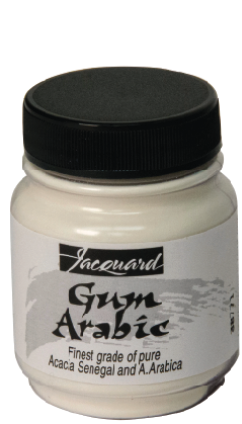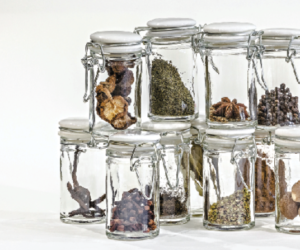
Gum arabic can do so many great things for your wines, from improving mouthfeel, making a thin wine taste fuller bodied, rounding out rough edges of grape tannins, increasing persistence of bubbles in sparkling wine, prolonging the action of metatartaric acid, to treating iron-induced oxidation problems. With such a wide scope of impressive credentials, what’s not to like?
Sure, many winemakers might scoff at yet another additive, but gum arabic is a natural product widely used in the food and beverage industry and a permissible additive in commercial winemaking. And the great thing about home winemaking is that there are no boundaries, so experiment all you can.
So why not give it a try in your home winemaking?
What is gum arabic?
Gum arabic, also known as gum acacia, is a natural glycoprotein-containing heteropolysaccharide extracted from the sap of two specific species of African Acacia trees: A. senegal and A. seyal. A heteropolysaccharide is a substance made up of many different saccharide units. In the case of gum arabic, the polymer is highly branched, consisting of arabinose, rhamnose and galactose units as well as glucuronic acids. Some of the many amino acids in the protein fractions include hydroxyproline, serine, threonine, proline, leucine, histidine and aspartic acid. The structure varies depending on a number of factors such as origin of wood, forest climate, and processing methods.
Gum arabic is very soluble in water and, as a colloid dispersion, it is used in food and beverage processing for a wide range of applications including as a stabilizer, an emulsifier, and as a thickener and syrup for making soft drinks or making gummy candies and chewing gum. One of its defining characteristics is that it exhibits very low viscosity compared to other gums in up to 30% aqueous solutions.
For winemaking applications, gum arabic is available in as small a format as 4 fl oz. (118 mL) and up to a gallon (3.8 L) or more, typically as a 20% solution under such names as Arabinol® (AEB Group) and Stabivin® (Laffort). The solution may contain some sulfite used as a preservative. The 4-fl oz. format is good to treat up to 30 gallons (114 L) of wine.
Winemaking applications
One of the distinctive features of gum arabic is that it acts as an adsorbing, protective colloid, meaning that it has the ability to protect colloidal matter from flocculating and precipitating into sediments. Colloidal matter is protected when sufficient amounts of protective colloids surround the surface of the colloidal matter, preventing its aggregation. Mannoproteins extracted from dead yeast cell walls during autolysis is another example of a protective colloid.
In young red wines, gum arabic can be used to stabilize anthocyanins, i.e., color pigments, which are known to be chemically unstable until they start polymerizing with tannins into larger anthocyanin-tannin complexes. But its greatest asset in reds is its ability to reduce tannin astringency and increase the perception of body or volume, reduce the perceptions of acidity and tannin harshness, while adding body, particularly that gum arabic action is most effective at higher wine pH. It is not recommended for reds destined for aging as those much-desirable polyphenol chemical reactions become inhibited and therefore shunting graceful maturation; the wine could take on a milky appearance that can affect its normal clarity. Try it on Gamay, Pinot Noir, Merlot, Petite Sirah, and even Cabernets.
Early-drinking whites and rosés too can benefit from gum arabic to add body to the mouthfeel, adding a sensation of fullness on the palate and tongue. A dry, sharp-tasting Sauvignon Blanc, for example, can suddenly turn into a most charming wine without the addition of sugar to tame all that acidity. That barrel-fermented Chardonnay can taste more “complete” with more complexity with just a touch of gum. And a summer-style rosé from Grenache would scream for a shot of gum arabic, not only to add fullness, but to round out those unwanted tannins.
In sparkling wines, it can also enhance perlage or bubbling where it acts by reducing the surface tension of the wine, which leads to increased fizzing. The magic of gum arabic can be witnessed by pouring an untreated sample and a treated one side by side in tall flutes and watching the bubbles in the treated sample race ahead.
And gum arabic can improve aromatic intensity and complexity as well as “palate” balance in all wines, including fruit and country wines.
Where cold stabilization through natural chilling or refrigeration methods is not possible, gum arabic can be used to enhance the action of metatartaric acid and extend its short-lived effects. It does so by encasing tartar crystals thereby keeping them completely separated and inhibiting tartrate crystal growth. Whereas a wine treated with metatartaric acid will be stable for approximately a year, gum arabic can add 6 months to a year. Metatartaric acid is a hemipolylactide of tartaric acid, meaning that it is a compound resulting from the intermolecular esterification and polymerization of tartaric acid molecules. It acts by interfering with bitartrate formation by binding to the active sites of the micro-crystal nuclei, which form the starting point for crystal formation; however, as metatartaric acid slowly hydrolyzes into tartaric acid, inhibition potential diminishes and the potential of tartrate formation increases, meaning that its action is temporary, usually less than one year. This reverse reaction can be slowed down by adding gum arabic and storing wine at colder temperatures.
As a stabilizing agent, gum arabic can be used to prevent ferric casse in high-iron content wines in conjunction with citric acid. Ferric casse is a highly oxidative condition that can cause turbidity (cloudiness). Although some iron comes from the soil, high iron is usually the result of processing juice or wine with equipment made from iron or iron alloys. Traditionally, affected wine was treated with ferrocyanic salts, such as potassium ferrocyanide, in what is known as blue fining; however, the use of this treatment is not recommended in home winemaking as it must be administered by an experienced enologist; excess ferrocyanide can decompose to highly toxic cyanides in the acidic medium of wine.
Application notes
Gum arabic is added at a rate of 0.5–2.0 mL/L (2–8 mL per gallon) prepared as a 20% solution, or as directed in product instructions. More can be added according to taste, being careful not to overdo it; I find that 1 mL/L almost invariably works best for my wines and taste. As with all additives and processing aids, always perform bench tests before treating a whole batch. Start with 1 mL/L and adjust up or down according to taste.
Gum arabic should only be added to clear, ready-to-bottle wine — this is very important. The wine should not be treated with any other agents following addition of gum arabic. Protective colloids, in general, can interfere with the fining action of agents, hence why gum arabic is added as the very last operation prior to bottling. Influence of protective colloids is greatest on gelatin followed by albumin; casein and isinglass are only minimally affected.
Older literature states that gum arabic can plug final filters; however, modern products are sterile filtered in order to ensure that the gum is completely sterile and easy to filter once added to wine. There are no concerns with the type of filter equipment used in home winemaking. In my experience, there have been no problems filtering treated wine down to 0.45 micron (e.g. fine or number 3 filter pads).
In sparkling wine, gum arabic is blended into the dosage and added to each bottle immediately following disgorging; it should never be added to the base wine that will be going through bottle fermentation.
For treating white wine affected by ferric casse, add 200–300 mg/L (ppm) of citric acid supplemented by up to 4 mL/L of 20% gum arabic solution as a protective colloid. Wines must be adequately sulfited to prevent citric acid from being metabolized into acetic acid by citric acid-hungry bacteria, including lactic acid bacteria used in malolactic fermentation. Reds are trickier as these require a pre-treatment with calcium phytate, not available to home winemakers.
Give it a try
Still not convinced on the merits of gum arabic? Give it a try. Prepare a glass of “control” wine and a second spiked with 1 mL/L of gum arabic. Then ask anyone to taste both — the treated wine should always stand out as the preferred one.






